The kitchen stove is an essential cooking appliance that plays a vital role in every household. Currently, there are many popular and favored types of stoves, including gas stoves, induction cookers, and electric stoves.
Each type of stove has different designs and operating mechanisms. Firstly, the gas stove is considered the most traditional type that has been around for a long time. Users ignite the stove using an electronic button or a mechanical knob, allowing gas from the tank to travel through the gas line to the burners. Simultaneously, a piezoelectric component or an electronic circuit generates a spark that ignites the gas flow, creating flames distributed across the burners.
In contrast, induction cookers and electric stoves operate in a simpler manner, with users primarily controlling them through electronic buttons or touch controls. Electric stoves heat up using a hot coil when electricity flows into the device, heating the glass surface and cooking the pots and pans. Induction cookers, on the other hand, rely on electromagnetic induction, using electric currents to heat the bottom of the cookware.

Gas stoves and various types of electric and induction stoves are being favored in many households. (Illustrative image).
Report on Stove Safety
Many households are currently transitioning from gas stoves to electric and induction cookers due to aesthetic appeal and safety. Additionally, electric stoves and induction cookers are also considered environmentally friendly. According to The Washington Post, about two-thirds of Americans cook with electric stoves.
However, are electric stoves and induction cookers truly safer than gas stoves? A report from the National Fire Protection Association (NFPA) indicates otherwise.
Specifically, the NFPA’s 2020 report states that households using electric or induction cookers have a fire rate 2.6 times higher than those using gas stoves. Surprisingly, the mortality rate in accidents involving electric or induction cookers is 3.4 times higher than in households using gas stoves, with injury rates nearly five times higher.

In the US, reports show that induction cookers and electric stoves are not significantly safer than gas stoves. (Illustrative image).
The report also indicates that in the US, from 2014 to 2018, cooking caused the highest number of home fires and injuries.
However, these figures are only recorded in the US and reflect the safety of various stove types in household usage today. In reality, both traditional and modern stoves carry similar risks if users do not know how to operate them correctly and are unaware of safety precautions.
The website Tasting Table emphasizes that common mistakes that can lead to incidents or accidents when using cooking stoves include leaving the stove on without supervision, forgetting to turn it off, or placing inappropriate items on the stove.
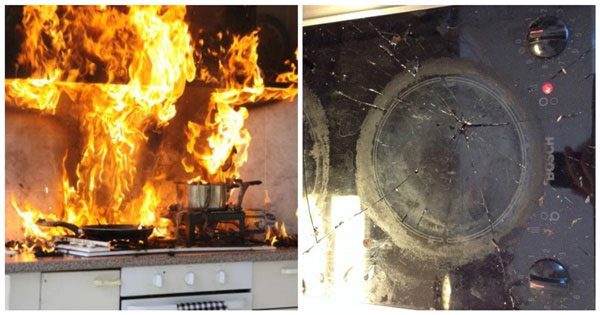
All types of stoves carry similar risks if not used correctly. (Illustrative image)
Safety Tips for Using Cooking Stoves
For Electric and Induction Stoves
1. Completely disconnect the power from the stove when not in use.
As mentioned earlier, modern electric and induction stoves are primarily controlled by electronic buttons and touch controls. While this is an advantage, it also poses some risks.
The electronic and touch buttons not only start the stove but also adjust the temperature levels. After cooking, many families simply turn off the stove using these buttons. However, experts suggest that this is not enough.
Due to the touch sensitivity, not only human hands but also any other objects or animal paws can trigger the stove. There have been many incidents caused by such accidental activations, leading to fires or even burns.
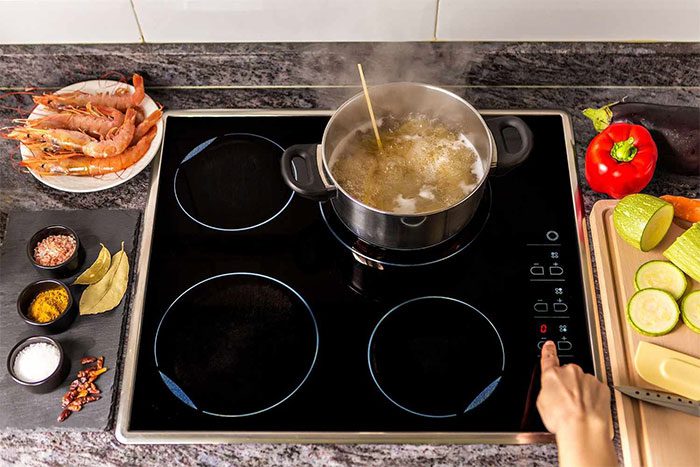
When not in use for an extended period, completely disconnect the power to electric and induction stoves. (Illustrative image).
Therefore, experts recommend that if you do not plan to use the electric or induction stove for a long time, such as overnight or for several days while no one is home, it is best to completely disconnect the power by unplugging it or turning off the circuit breaker.
2. Use the stove at appropriate temperatures.
Avoid using the induction or electric stove at the highest temperature continuously for an extended period, as this can increase the device’s electricity consumption and lead to faster corrosion of the stove.
Users should only utilize the stove at maximum temperature for a few minutes at the beginning of the cooking process and then switch to medium or low settings.
Additionally, there are various safety features on the stove, such as the “child lock” feature. Users, especially families with small children or pets, should regularly use this feature.

Limit using the highest temperature on induction and electric stoves. (Illustrative image).
3. Choose the right cookware.
Users should equip a dedicated set of cookware specifically for electric and induction stoves to ensure effective cooking and prevent energy waste.
Specifically, pots used for induction cookers should be made of stainless steel, cast iron, or non-stick steel. Additionally, prioritize selecting pots with flat bottoms. Unevenly surfaced pots can affect the heat absorption and transfer from the stove to the pot, leading to uneven cooking of the food.
When purchasing pots for induction and electric stoves, consider the size of the stove to avoid selecting pots that are either too large or too small.
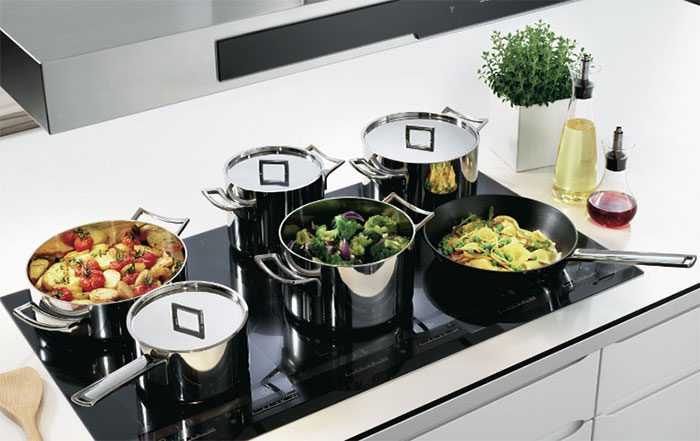
Pots for induction stoves should be made of stainless steel, cast iron, or non-stick steel. (Illustrative image).
For Gas Stoves
1. Turn off the gas tank valve after cooking.
One important reminder from gas distributors and installers to ensure safety while using gas stoves is to turn off the gas tank valve after cooking.
This practice not only enhances safety by preventing gas leaks from worn-out gas lines but also avoids wasting gas by allowing it to escape into the air.
The procedure is quite simple: after finishing cooking, the user should turn the gas tank valve off, allow the flame on the stove to burn out, then turn off the stove. This ensures that any residual gas is consumed and prevents any leaking gas from the tank. Additionally, this helps avoid sudden flare-ups when the stove is ignited next time.
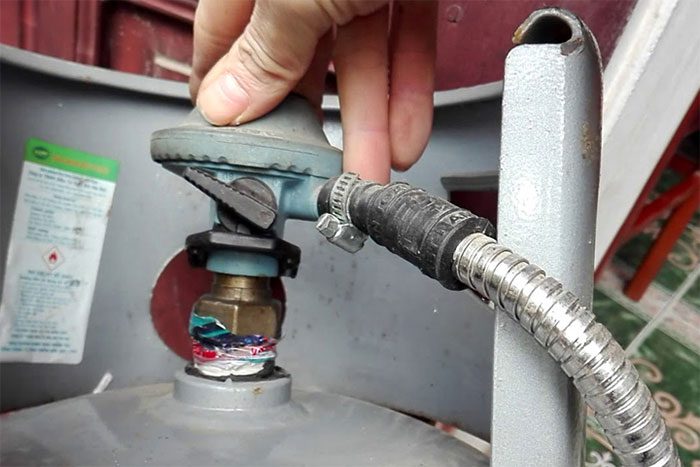
After cooking, users should turn off the gas tank valve for safety. (Illustrative image).
2. Place the stove in a safe location.
As a type of stove that produces open flames, the placement of a gas stove is crucial and directly affects user safety. Some basic criteria for gas stove placement include ensuring the area is well-ventilated while avoiding direct drafts; the surface for the stove should not be made of flammable materials like wood or bamboo but rather of stone, concrete, or glass; the gas stove should be at least 1 meter away from the ceiling and 15 cm from walls or other barriers, away from flammable or explosive materials and other electrical devices; the gas tank should be positioned upright and lower than the gas stove, also away from other power sources…
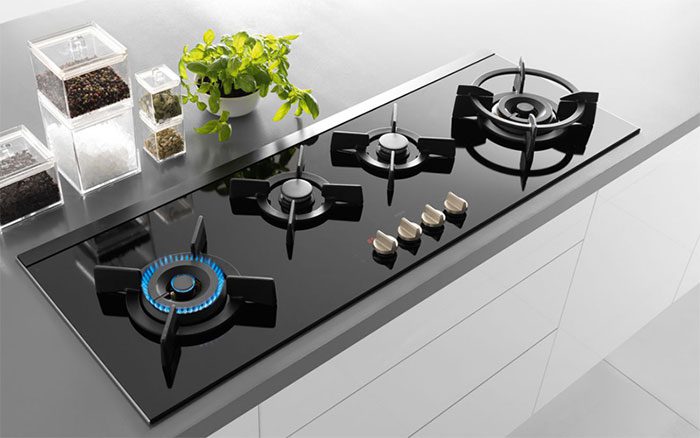
The gas stove should be placed away from flammable items. (Illustrative image).
For gas, electric, and induction stoves, experts recommend regular cleaning, inspection, and maintenance every six months. Any malfunctions should be repaired or replaced promptly.


















































